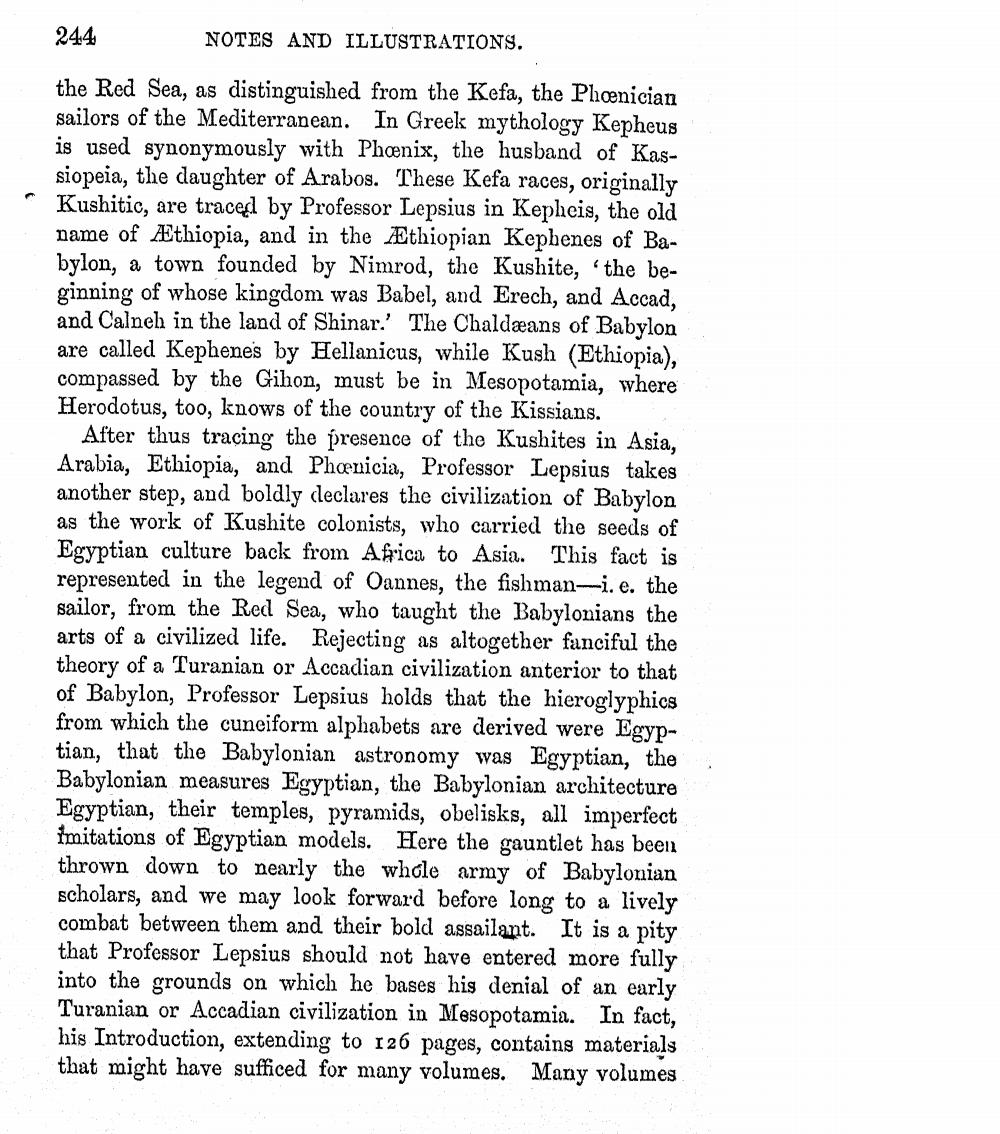________________
F
244
NOTES AND ILLUSTRATIONS.
the Red Sea, as distinguished from the Kefa, the Phoenician sailors of the Mediterranean. In Greek mythology Kepheus is used synonymously with Phoenix, the husband of Kassiopeia, the daughter of Arabos. These Kefa races, originally Kushitic, are traced by Professor Lepsius in Kepheis, the old name of Ethiopia, and in the Ethiopian Kephenes of Babylon, a town founded by Nimrod, the Kushite, 'the beginning of whose kingdom was Babel, and Erech, and Accad, and Calneh in the land of Shinar.' The Chaldæans of Babylon are called Kephenes by Hellanicus, while Kush (Ethiopia), compassed by the Gihon, must be in Mesopotamia, where Herodotus, too, knows of the country of the Kissians.
After thus tracing the presence of the Kushites in Asia, Arabia, Ethiopia, and Phoenicia, Professor Lepsius takes another step, and boldly declares the civilization of Babylon as the work of Kushite colonists, who carried the seeds of Egyptian culture back from Africa to Asia. This fact is represented in the legend of Oannes, the fishman-i. e. the sailor, from the Red Sea, who taught the Babylonians the arts of a civilized life. Rejecting as altogether fanciful the theory of a Turanian or Accadian civilization anterior to that of Babylon, Professor Lepsius holds that the hieroglyphics from which the cuneiform alphabets are derived were Egyptian, that the Babylonian astronomy was Egyptian, the Babylonian measures Egyptian, the Babylonian architecture Egyptian, their temples, pyramids, obelisks, all imperfect imitations of Egyptian models. Here the gauntlet has been thrown down to nearly the whole army of Babylonian scholars, and we may look forward before long to a lively combat between them and their bold assailant. It is a pity that Professor Lepsius should not have entered more fully into the grounds on which he bases his denial of an early Turanian or Accadian civilization in Mesopotamia. In fact, his Introduction, extending to 126 pages, contains materials that might have sufficed for many volumes. Many volumes.




